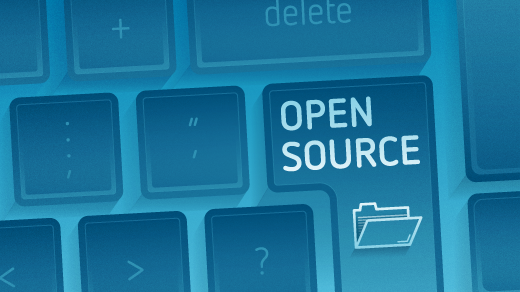mirror of
https://github.com/LCTT/TranslateProject.git
synced 2025-01-22 23:00:57 +08:00
74 lines
4.4 KiB
Markdown
74 lines
4.4 KiB
Markdown
|
|
Tips for listing files with ls at the Linux command line
|
|||
|
|
======
|
|||
|
|
Learn some of the Linux 'ls' command's most useful variations.
|
|||
|
|

|
|||
|
|
|
|||
|
|
One of the first commands I learned in Linux was `ls`. Knowing what’s in a directory where a file on your system resides is important. Being able to see and modify not just some but all of the files is also important.
|
|||
|
|
|
|||
|
|
My first LInux cheat sheet was the [One Page Linux Manual][1] , which was released in1999 and became my go-to reference. I taped it over my desk and referred to it often as I began to explore Linux. Listing files with `ls -l` is introduced on the first page, at the bottom of the first column.
|
|||
|
|
|
|||
|
|
Later, I would learn other iterations of this most basic command. Through the `ls` command, I began to learn about the complexity of the Linux file permissions and what was mine and what required root or sudo permission to change. I became very comfortable on the command line over time, and while I still use `ls -l` to find files in the directory, I frequently use `ls -al` so I can see hidden files that might need to be changed, like configuration files.
|
|||
|
|
|
|||
|
|
According to an article by Eric Fischer about the `ls` command in the [Linux Documentation Project][2], the command's roots go back to the `listf` command on MIT’s Compatible Time Sharing System in 1961. When CTSS was replaced by [Multics][3], the command became `list`, with switches like `list -all`. According to [Wikipedia][4], `ls` appeared in the original version of AT&T Unix. The `ls` command we use today on Linux systems comes from the [GNU Core Utilities][5].
|
|||
|
|
|
|||
|
|
Most of the time, I use only a couple of iterations of the command. Looking inside a directory with `ls` or `ls -al` is how I generally use the command, but there are many other options that you should be familiar with.
|
|||
|
|
|
|||
|
|
`$ ls -l` provides a simple list of the directory:
|
|||
|
|
|
|||
|
|

|
|||
|
|
|
|||
|
|
Using the man pages of my Fedora 28 system, I find that there are many other options to `ls`, all of which provide interesting and useful information about the Linux file system. By entering `man ls` at the command prompt, we can begin to explore some of the other options:
|
|||
|
|
|
|||
|
|

|
|||
|
|
|
|||
|
|
To sort the directory by file sizes, use `ls -lS`:
|
|||
|
|
|
|||
|
|

|
|||
|
|
|
|||
|
|
To list the contents in reverse order, use `ls -lr`:
|
|||
|
|
|
|||
|
|

|
|||
|
|
|
|||
|
|
To list contents by columns, use `ls -c`:
|
|||
|
|
|
|||
|
|

|
|||
|
|
|
|||
|
|
`ls -al` provides a list of all the files in the same directory:
|
|||
|
|
|
|||
|
|

|
|||
|
|
|
|||
|
|
Here are some additional options that I find useful and interesting:
|
|||
|
|
|
|||
|
|
* List only the .txt files in the directory: `ls *.txt`
|
|||
|
|
* List by file size: `ls -s`
|
|||
|
|
* Sort by time and date: `ls -d`
|
|||
|
|
* Sort by extension: `ls -X`
|
|||
|
|
* Sort by file size: `ls -S`
|
|||
|
|
* Long format with file size: `ls -ls`
|
|||
|
|
* List only the .txt files in a directory: `ls *.txt`
|
|||
|
|
|
|||
|
|
|
|||
|
|
|
|||
|
|
To generate a directory list in the specified format and send it to a file for later viewing, enter `ls -al > mydirectorylist`. Finally, one of the more exotic commands I found is `ls -R`, which provides a recursive list of all the directories on your computer and their contents.
|
|||
|
|
|
|||
|
|
For a complete list of the all the iterations of the `ls` command, refer to the [GNU Core Utilities][6].
|
|||
|
|
|
|||
|
|
--------------------------------------------------------------------------------
|
|||
|
|
|
|||
|
|
via: https://opensource.com/article/18/10/ls-command
|
|||
|
|
|
|||
|
|
作者:[Don Watkins][a]
|
|||
|
|
选题:[lujun9972](https://github.com/lujun9972)
|
|||
|
|
译者:[译者ID](https://github.com/译者ID)
|
|||
|
|
校对:[校对者ID](https://github.com/校对者ID)
|
|||
|
|
|
|||
|
|
本文由 [LCTT](https://github.com/LCTT/TranslateProject) 原创编译,[Linux中国](https://linux.cn/) 荣誉推出
|
|||
|
|
|
|||
|
|
[a]: https://opensource.com/users/don-watkins
|
|||
|
|
[1]: http://hackerspace.cs.rutgers.edu/library/General/One_Page_Linux_Manual.pdf
|
|||
|
|
[2]: http://www.tldp.org/LDP/LG/issue48/fischer.html
|
|||
|
|
[3]: https://en.wikipedia.org/wiki/Multics
|
|||
|
|
[4]: https://en.wikipedia.org/wiki/Ls
|
|||
|
|
[5]: http://www.gnu.org/s/coreutils/
|
|||
|
|
[6]: https://www.gnu.org/software/coreutils/manual/html_node/ls-invocation.html#ls-invocation
|